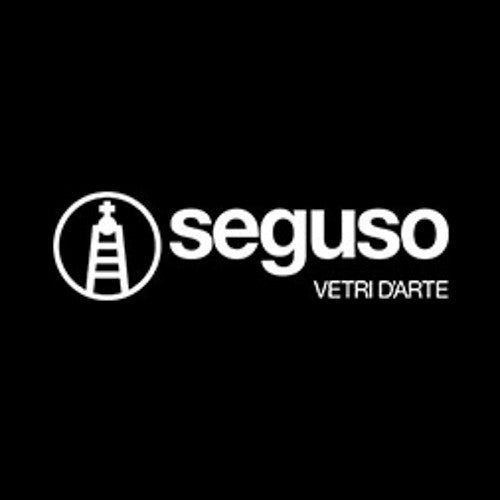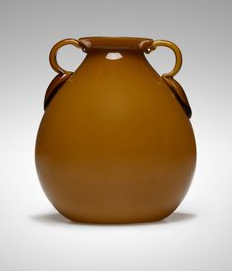In 1866 Antonio Salviati, a lawyer from Vicenza (Italy), in cooperation with some English financing partners, constituted the
Vetreria Salviati & Co.The firm took the english name of The Venice and Murano Glass and Mosaic Company and divided its activities into two clearly distinct parts: blown glass on one hand, and mosaic on the other. In both sectors the firm met with remarkable success, even though, especially in glassware it remained very close to the classical schemes, sometimes elaborated again and possibly a little bit dulled by technical virtuosities.
At the turn of the century, however, it was the best that one could found in Murano. In 1898 the firm was taken over only by the Camerino Family, who retained ownership to the end of 1980. in the first post war period, after a time of enforced stoppage, the glass factory opened again in the early 20s and the first examples of its "modern" production appeared, and were illustrated several times in the "Domus" magazine in 1930.
Two years later the painter Dino Martens started cooperating as designer, and produced some of the firm's best objects.
While closely linked with the more traditional Murano techniques, he designed completely new and utterly mad objects, a clear anticipation of what he would do in the 50s.
This series of vases, made of pale yellow glass, exhibited at the 1932 Venice Biennale, were produced under a Salviati license at other furnaces.
Another remarkable series of avant-garde products were those designed by the painter Mario De Luigi, who, using the Guido Bin pseudonym, appeared in the catalogue of the 1936 Venice Biennale presenting "vetri musivi".
These are vases produced using the technique of a molten mosaic, containing simple - almost coarse - forms, and brightly coloured figure decorations.
But production was limited to a few items, due to the enormous difficulty of execution and to the fragility of the product itself.
In the period after the second world war the firm exhibited its mosaics every year at the various Venice Biennali.
In 1958, thanks to the cooperation of Luciano Gaspari and Romano Chirivi, very thick glassware was exhibited in the Decoratve Arts pavillion, with stretched shapes and colours or white filaments included.
These objects made the firm awarded a prize that year at the Brussel International Universal Exhibition (Belgium).
In 1959 the glassware opened its own furnace, and for the first time it produced object directly at Fondamenta Radi (Murano, Venice).
In 1962 it was awarded the Compasso d'Oro for Industrial Design with a series of monochrome vases designed by Sergio Asti. Some foreign artist worked for the glass factory during the 70s, such as Claire Falkenstein, Ward Bennet, Teff Sarzin.
Works by Salviati & Co. are on show at the Liege Musee du Verre, at the Kestner Museum in Hannover, at the New York Museum of Modern Art, at the Corning Museum of Glass in New York, and at the Museum Harretz in tel Aviv.
The Camerino family sold the firm in the late 80s to the Sant'Angelo financial group, then in the hands of a French group, like many of the other Murano companies, then purchased by Raul Gardini in the 1980s, Salviati has overcome difficult moments linked to the economic and production sector crisis.
In 2015 Umana, a temporary employment agency founded by the mayor of Venice Luigi Brugnaro, buys the historic glassworks.




Leave a comment
All comments are moderated before being published.
This site is protected by hCaptcha and the hCaptcha Privacy Policy and Terms of Service apply.